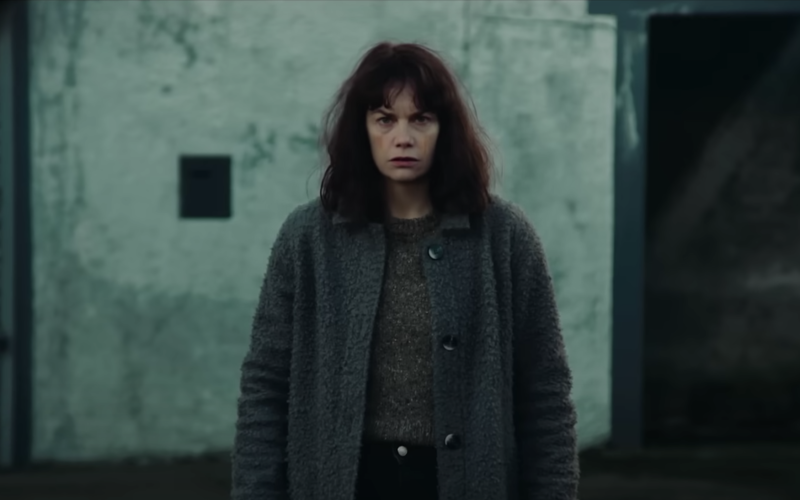A woman wakes up in the middle of a country road in her nightgown, surrounded by green fields and a group of curious cows. She walks home in the freezing morning air, barefoot and bloody, only to enter her living room and find a painting of Jesus with a kitchen knife driven through one eye. (“That’s not good,” she mumbles to herself. “Sorry Jesus.”) Moments later, the woman is stunned and horrified to discover a dead body in her home. As a chronic sleepwalker she has no idea how it got there.
These are the striking opening scenes of new six-part Showtime/Paramount+ series, The Woman in the Wall. (The show originally aired in the U.K. last summer on BBC One.) The woman at the center of the chaos is Lorna Brady, played with a jagged rawness by The Affair’s Ruth Wilson. Lorna lives in a small (fictional) Irish town named Kilkinure, where she works as a seamstress. She also lives on the edge of dysfunction; she’s so overwhelmed by the emotional and mental fallout of former traumas that they violently erupt from her while she sleeps. Lorna’s anguish stems from being one of a handful of women in town who survived a local Magdalene laundry.

 ‘The Woman in the Wall’ begins streaming on Showtime on Jan. 19. Paramount+ subscribers with a Showtime add-on can also view it starting Jan. 19.
‘The Woman in the Wall’ begins streaming on Showtime on Jan. 19. Paramount+ subscribers with a Showtime add-on can also view it starting Jan. 19.
